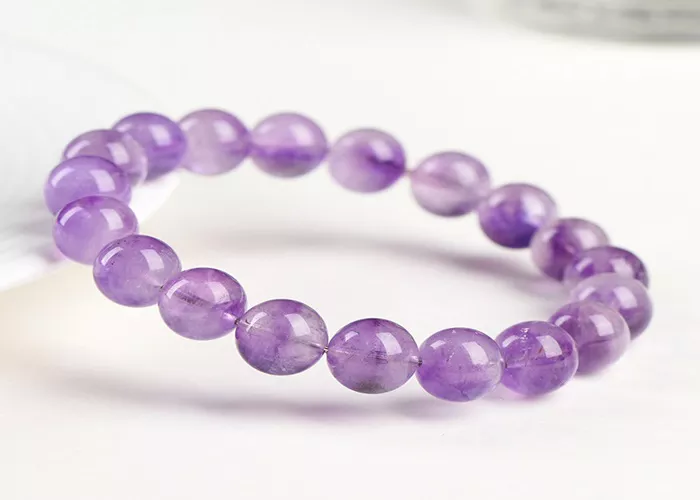In the colorful world of gemstones, brown amethyst stands out with its unique color and mysterious aura, attracting the attention of numerous jewelry enthusiasts and collectors. As a relatively rare gemstone variety, brown amethyst not only possesses extremely high ornamental value but also carries rich cultural and historical connotations. Below, we will provide a detailed introduction to brown amethyst, covering its definition, characteristics, origins, identification methods, and market value.
Definition of Brown Amethyst
Brown amethyst, as the name suggests, is a type of amethyst that exhibits a brown hue. In gemology, amethyst belongs to the quartz family, with a chemical composition mainly of silicon dioxide (SiO2) and a crystal structure of the trigonal system. Brown amethyst forms its unique brown tone under natural conditions due to geological processes or changes in mineral composition, which alter the content and distribution of manganese ions in the amethyst.
Characteristics of Brown Amethyst
The characteristics of brown amethyst are mainly reflected in its color, transparency, luster, and hardness.
Color: Brown amethyst ranges in color from light brown to dark brown, sometimes presenting a mixture of purple or red hues. This unique color makes brown amethyst distinctive in the gemstone world.
Transparency: The transparency of brown amethyst varies among individual stones, with some exhibiting a translucent state while others are more transparent. The level of transparency directly affects the gemstone’s ornamental value and market value.
Luster: Brown amethyst typically has a gentle luster, exhibiting a glassy or greasy sheen. This luster allows brown amethyst to display a charming radiance under light.
Hardness: Brown amethyst has a hardness of 7, relatively high, making it resistant to scratching or abrasion in daily wear.
The Origins of Brown Amethyst
The formation of brown amethyst is closely related to geological processes and mineral composition. During geological processes, magma or hydrothermal fluids rich in silicon dioxide crystallize under appropriate temperatures and pressures, forming the primitive crystals of amethyst. In this process, the content and distribution of manganese ions have a significant impact on the color of the amethyst. When the manganese ion content is moderate and evenly distributed, the amethyst will exhibit a vibrant purple color; when the manganese ion content is too high or unevenly distributed, it may form brown or other colors of amethyst.
Identification Methods for Brown Amethyst
To identify the authenticity and quality of brown amethyst, one can start from the following aspects:
Observing Color: Genuine brown amethyst has a natural, even color with a certain depth. Dyed or synthetic brown amethyst may exhibit overly bright or uniform colors, lacking a natural feel.
Checking Transparency: The transparency of brown amethyst varies among individual stones but is usually not completely transparent. Excessively transparent or turbid brown amethyst may indicate issues.
Observing Luster: Brown amethyst typically has a gentle luster, exhibiting a glassy or greasy sheen. Brown amethyst with excessively dull or overly bright luster may be problematic.
Testing Hardness: Brown amethyst has a hardness of 7 and can be tested using a hardness tester. However, it should be noted that hardness testing may damage the gemstone, so it should be conducted under the guidance of professionals.
Using Professional Equipment: For difficult-to-judge brown amethyst, professional gemstone identification equipment such as UV lights or microscopes can be used for detection. These devices can help us more accurately determine the authenticity and quality of brown amethyst.
Market Value of Brown Amethyst
The market value of brown amethyst varies depending on factors such as color, transparency, size, and cutting craftsmanship. Generally, brown amethyst with vibrant colors, high transparency, moderate size, and exquisite cutting craftsmanship has higher market value.
Color: Color is an important factor affecting the market value of brown amethyst. Brown amethyst with vibrant and even colors is more popular and therefore commands higher prices.
Transparency: Highly transparent brown amethyst can better showcase its internal structure and brilliance, thus commanding higher prices.
Size: The size of a gemstone is usually directly proportional to its market value. Therefore, larger brown amethyst often has higher market value.
Cutting Craftsmanship: Exquisite cutting craftsmanship can maximize the beauty and brilliance of brown amethyst, thereby enhancing its market value.
Cultural Implications and Wearing Suggestions for Brown Amethyst
Brown amethyst not only possesses unique beauty and precious market value but also carries rich cultural and historical connotations. In many cultures, brown is regarded as a symbol of stability, maturity, and mystery. Therefore, brown amethyst is also considered a gemstone that can bring calmness, wisdom, and strength.
Conclusion
Brown amethyst showcases unique charm in jewelry appreciation with its distinctive color and mysterious aura. By understanding its definition, characteristics, origins, identification methods, and market value, we can better appreciate and collect this precious gemstone. Meanwhile, when wearing brown amethyst, attention should also be paid to matching and maintenance to fully showcase its beauty and brilliance.
Related topic:
- Best Crystals to Pair with Amethyst
- How Hard Wearing Is Amethyst
- How to Test if Your Amethyst Is Real


